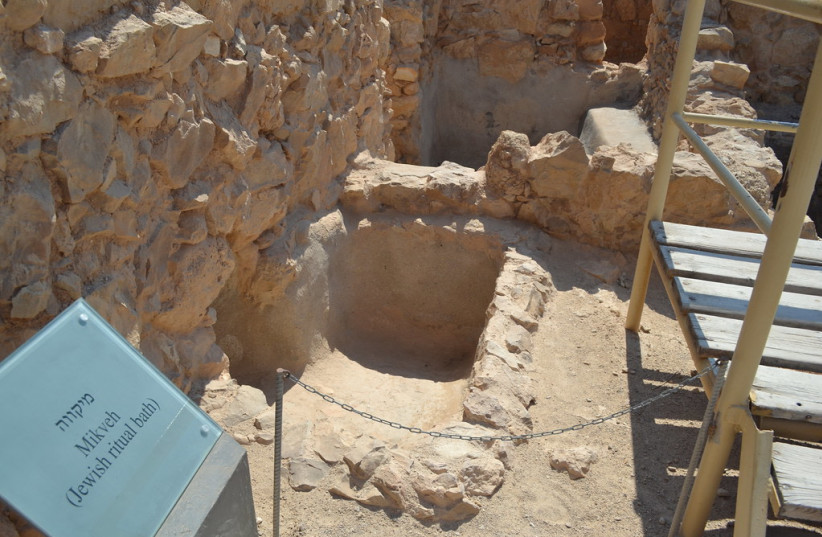300-year-old Jewish mikveh excavated in Auschwitz

Jewish people lived in Poland for centuries until the Holocaust obliterated their numbers.
A mikveh dating to the 18th or 17th centuries was discovered in the Polish city of Oświęcim, Heritage Daily reported on Friday.
Oświęcim is the Polish name for a place that is far better known for its German name, a name that will live in infamy forever: Auschwitz.
Jews first came to settle in Poland in the early 1200s, according to MyJewishLearning, and, as Heritage Daily notes, first settled in Oświęcim in the 1500s.
History of Jews in Poland
Over the next few centuries, the Jewish population would grow to reach, by the start of the second world war, 8000 members - a figure comprising half of the city’s population at the time, according to the University of California’s Shoah Foundation.
Recently, a piece of this history was discovered. The wooden mikveh, a bath used in Jewish religious life for purposes of ritual purity, was discovered along with other artifacts that dated to the middle ages.
Heritage Daily writes that the excavation efforts were conducted in preparation for the construction of an underground parking garage.
Grzegorz Mądrzycki, one of the archaeologists on the project said, “we dug up a few stairs leading down to a wooden floor, which first appeared to be a fragment of a wooden hut. However, after removing successive layers of earth, it turned out to be a wooden mikvah."
Fortunately for the archaeologists, the mikveh was found in excellent condition, an occurrence that is not a given, especially in regard to ancient wooden structures which are susceptible to rot and decay.
Heritage Daily reported that archaeologists believe the mikveh was discovered in such a well-preserved state because water prevented oxygen, and therefore fungi, from reaching the wooden structure.
According to Jewish law, it is not permissible to use simply any water in a mikveh. The Torah describes “living water” or “freshwater” which is supplied from a clean, natural source such as a river, spring or cistern of rainwater.
In Oświęcim, there are abundant sources of water, such as the Vistula River, which may have fed this particular mikveh.
The Nazis attempted to erase Jewish people and Judaism from the world. The concentration camps, such as the one in Oświęcim, Auschwitz-Birkenau, are where the murder of millions was carried out. Ironically, however, try as they might, the Nazis could not erase Judaism from the primary place where they staged what is perhaps the most infamous genocide the world has ever known.
Jerusalem Post Store
`; document.getElementById("linkPremium").innerHTML = cont; var divWithLink = document.getElementById("premium-link"); if (divWithLink !== null && divWithLink !== 'undefined') { divWithLink.style.border = "solid 1px #cb0f3e"; divWithLink.style.textAlign = "center"; divWithLink.style.marginBottom = "15px"; divWithLink.style.marginTop = "15px"; divWithLink.style.width = "100%"; divWithLink.style.backgroundColor = "#122952"; divWithLink.style.color = "#ffffff"; divWithLink.style.lineHeight = "1.5"; } } (function (v, i) { });

